
Peugeot 2008 Specs – The Complete, In-Depth Guide
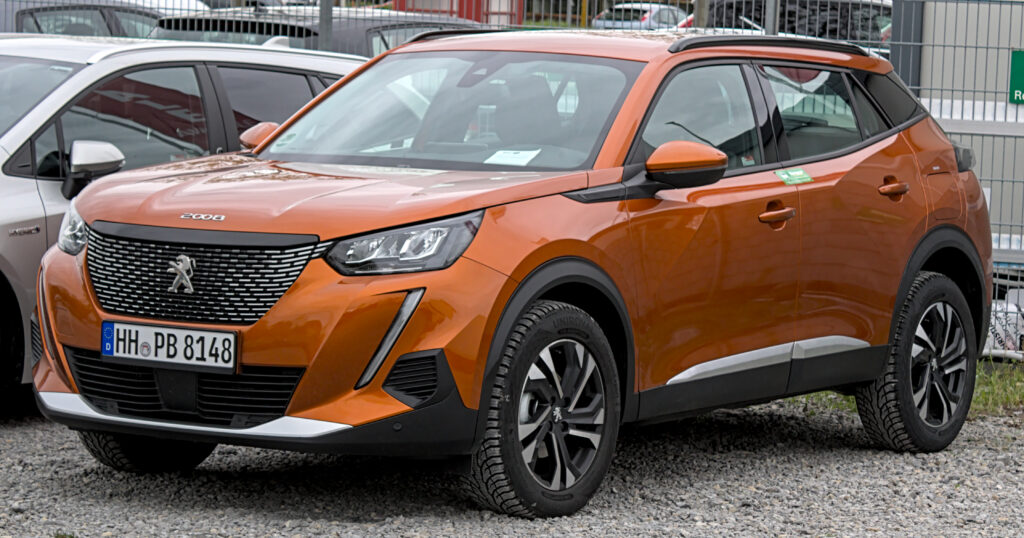
- Overview of the Peugeot 2008
- Exterior Dimensions and Measurements
- Interior Dimensions and Cabin Comfort
- Engine Options and Power Specifications
- Fuel Efficiency and Consumption Data
- Performance, Top Speed, and Driving Dynamics
- Transmission Options
- Infotainment, Digital Displays, and Connectivity
- Safety Specifications and Driver Assistance
- Braking System and Steering Specs
- Suspension and Chassis Architecture
- Weight Specifications and Payload
- Towing Capacity and Roof Load
- Wheel Sizes, Tyres, and Turning Radius
- Peugeot 2008 Tech and Comfort Features
- Full Specification Table (Structured Overview)
- Final Thoughts
- FAQs
Overview of the Peugeot 2008
The Peugeot 2008 stands as one of the most compelling compact SUVs in today’s market—a blend of European style, clever engineering, and real-world practicality. When we explore its specifications, we uncover a model that’s far more than a pretty face; it’s a machine designed with purpose. From its sculpted exterior to its tech-rich cabin and efficient engines, the 2008 quietly flexes capabilities that rival bigger SUVs. In this deep-dive, we unpack every essential specification—performance, dimensions, interior tech, engines, safety features, efficiency data, towing capability, weights, and more—to build a full picture that sets you up to understand the 2008 on a level that surpasses typical reviews.
Exterior Dimensions and Measurements
The Peugeot 2008 adopts a stance that balances agility with presence. Its dimensions position it comfortably within the compact SUV segment while offering interior space closer to what some midsize rivals claim.
Exterior Length, Width, and Height
- Length: Approximately 4,300 mm
- Width: Around 1,770 mm (without mirrors)
- Height: Roughly 1,550–1,560 mm depending on trim
- Wheelbase: 2,605 mm
We find that the wheelbase plays a critical role in shaping both interior comfort and vehicle dynamics. Peugeot intentionally lengthened it to give the 2008 more stability while carving out rear-seat room that defies its category.
Ground Clearance and Approach Angles
- Ground Clearance: Around 170–180 mm
- Approach/Departure Angles: ~16° front / 32° rear
While the 2008 isn’t meant for hardcore off-roading, these angles allow it to handle rural terrain, steep driveways, and uneven city roads without scraping or drama.
Interior Dimensions and Cabin Comfort
Step inside the Peugeot 2008, and it's immediately obvious that Peugeot’s design team aimed to make the cabin feel premium, immersive, and surprisingly spacious.
Seating Capacity and Cabin Width
- Seating: 5
- Front Shoulder Room: 1,350+ mm
- Rear Shoulder Room: ~1,330 mm
The 2008’s compact footprint hides a cabin that genuinely accommodates adults in the back. Peugeot’s i-Cockpit design frees space by lowering the instrument panel and pushing controls outward.
Boot Space and Cargo Practicality
- Boot Capacity:
- 434 litres (petrol/diesel versions)
- 405–410 litres (e-2008 due to battery placement)
- Maximum Cargo With Seats Folded: ~1,467 litres
Straight walls, a wide opening, and a low loading lip make daily practicality effortless—ideal for small families, weekend adventurers, or anyone who appreciates a generous cargo area.
Engine Options and Power Specifications
The Peugeot 2008’s engine lineup caters to various needs—whether you want efficiency, spirited performance, or emissions-free driving.
Petrol Engine Specifications
1.2 PureTech 100
- Engine: 1.2L 3-cyl turbo
- Power: 100 hp
- Torque: 205 Nm
- Transmission: 6-speed manual
- 0–62 mph: ~10.9 seconds
1.2 PureTech 130
- Engine: 1.2L 3-cyl turbo
- Power: 130 hp
- Torque: 230 Nm
- Transmission: 8-speed automatic (EAT8) or manual
- 0–62 mph: ~9.2 seconds
The PureTech range is lightweight, responsive, and efficient, delivering a balanced feel that's ideal for both city manoeuvres and motorway journeys.
Diesel Engine Specifications
1.5 BlueHDi 110
- Engine: 1.5L 4-cyl diesel
- Power: 110 hp
- Torque: 250 Nm
- Transmission: 6-speed manual
- Strength: Exceptional long-distance economy
Diesel versions shine when driven consistently or when the vehicle is frequently loaded due to their additional torque.
Electric Powertrain (Peugeot e-2008)
- Motor Output: 136 hp
- Torque: 260 Nm
- Battery: 50 kWh usable
- Range: ~214–242 miles WLTP (depending on year/version)
- 0–62 mph: ~8.9 seconds
The e-2008 delivers instant torque, near-silent running, and a driving experience that feels more premium thanks to its electric refinement.
You may be interested in reading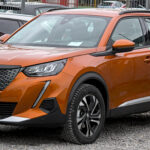 Peugeot 2008 Reliability: The Complete Owner-Focused Guide
Peugeot 2008 Reliability: The Complete Owner-Focused GuideFuel Efficiency and Consumption Data
In real-world conditions, the Peugeot 2008 scores well across all fuel types.
Petrol Efficiency
- PureTech 100: 45–52 mpg
- PureTech 130: 43–50 mpg
These numbers stem from lightweight engineering and Peugeot’s fine-tuned turbocharging.
Diesel Efficiency
- BlueHDi 110: 58–70 mpg
This powertrain is by far the most efficient option for high-mileage drivers.
Electric Consumption (e-2008)
- Average Consumption: 14–17 kWh/100 km
- Real-World Range: 180–210 miles
Efficiency varies based on conditions, but Peugeot’s electric motors remain impressively frugal.
Performance, Top Speed, and Driving Dynamics
The Peugeot 2008 is tuned for comfort without sacrificing stability. Even at motorway speeds, its planted feel and responsive steering offer confidence.
Performance Specs
- Top Speed:
- PureTech 100 → 115 mph
- PureTech 130 → 126 mph
- BlueHDi 110 → 117 mph
- e-2008 → 93 mph (electronically limited)
Driving Feel Summary
- Light steering makes tight streets a breeze
- Multi-link design helps maintain composure over bumps
- Turbo engines deliver strong mid-range torque
- The EV model feels the quickest from a standstill
Transmission Options
Peugeot offers different transmissions to suit varying tastes.
6-Speed Manual
- Crisp, notchy engagement
- Suited for drivers who prefer involvement
8-Speed Automatic (EAT8)
- Smooth and intuitive
- Prioritises efficiency with well-spaced ratios
- Works particularly well with the 130 hp engine
Infotainment, Digital Displays, and Connectivity
The 2008’s cabin feels futuristic thanks to Peugeot’s i-Cockpit architecture.
Digital Driver Display
- Available in 3D form on higher trims
- Customisable themes
- Provides navigation overlays and driver-assist visuals
Touchscreen Systems
- 7-inch Display: Base trims
- 10-inch HD Display: Higher trims
- Wireless Apple CarPlay & Android Auto on recent model years
The interface blends sharp graphics with a modern layout, complemented by piano-key style toggles that add flair.
Safety Specifications and Driver Assistance
Safety plays a major role in Peugeot’s engineering philosophy.
Standard Safety Features
- Automatic Emergency Braking
- Lane Keep Assist
- Speed Limit Recognition
- Driver Attention Alert
- Cruise Control
Optional or Higher-Trim Features
- Adaptive Cruise Control
- Blind-Spot Monitoring
- Park Assist (semi-automatic)
- Advanced 3D Navigation
Euro NCAP granted the Peugeot 2008 a 5-star rating, reinforcing its safety credentials.
Braking System and Steering Specs
Brake Dimensions
- Front Discs: 266–284 mm
- Rear Brakes: Disc or drum depending on trim
Steering System
- Electric power steering with variable assistance
- Tight turning circle (~10.4 m)
The steering calibration leans toward city manoeuvrability rather than sports tuning, which suits the target audience perfectly.
You may be interested in reading Peugeot 2008 Reliability: The Complete Owner-Focused Guide
Peugeot 2008 Reliability: The Complete Owner-Focused Guide Are Peugeot 208 Reliable? The Complete Reliability Breakdown for Every Generation
Are Peugeot 208 Reliable? The Complete Reliability Breakdown for Every GenerationSuspension and Chassis Architecture
Peugeot opted for a well-proven formula using lightweight construction and a flexible platform strategy.
Platform
- CMP Modular Platform shared with multiple Stellantis models
- Enables ICE and EV versions on the same chassis
Suspension Setup
- Front: MacPherson strut
- Rear: Torsion beam
This yields cost efficiency, durability, and a predictable driving character.
Weight Specifications and Payload
Understanding weight figures helps us gauge efficiency and towing capability.
Kerb Weight
- Petrol models: 1,200–1,260 kg
- Diesel models: 1,275–1,330 kg
- e-2008: 1,540–1,600 kg
Maximum Payload
- Typically 450–520 kg depending on configuration
Towing Capacity and Roof Load
Towing Capacity
- Petrol: Up to 1,200 kg (braked)
- Diesel: Up to 1,250 kg (braked)
- e-2008: Not homologated for towing
Roof Load
- Up to 70 kg
This allows roof boxes, bike racks, and travel gear with ease.
Wheel Sizes, Tyres, and Turning Radius
Wheel Options
- 16-inch steel wheels
- 17-inch alloys
- 18-inch alloys (GT trims)
Typical Tyre Sizes
- 215/60 R16
- 215/55 R17
- 215/50 R18
These tyre profiles balance comfort with stability.
Peugeot 2008 Tech and Comfort Features
The Peugeot 2008 offers a blend of practical and premium features designed to elevate daily driving.
Comfort Features Include:
- Dual-zone climate control
- Keyless entry and start
- Heated seats
- Ambient cabin lighting
- Panoramic glass roof
Tech Highlights:
- Over-the-air software updates (recent models)
- Wireless phone charging
- High-definition reversing camera
- Gesture-controlled interface options
Full Specification Table (Structured Overview)
Here’s a quick-reference list to consolidate everything:
- Body Style: Compact SUV
- Engines: 1.2 Petrol, 1.5 Diesel, 136-hp EV
- Power Range: 100–136 hp
- Torque Range: 205–260 Nm
- Gearboxes: 6MT, 8AT, Single-speed EV
- Drive Type: FWD
- Boot Volume: 405–434 L
- Kerb Weight: 1,200–1,600 kg
- Towing (braked): 1,200–1,250 kg
- Top Speed Range: 93–126 mph
- Wheel Sizes: 16–18 inches
Final Thoughts
The Peugeot 2008 is a masterclass in modern compact SUV design. Its specifications tell a story of balance—between power and efficiency, between technology and simplicity, between compact dimensions and generous space. Whether we gravitate toward the petrol, diesel, or fully electric e-2008, every version carries Peugeot’s unmistakable flair. When we assess the 2008 on paper and behind the wheel, the specifications come together in a way that reinforces why this model continues climbing sales charts. It’s stylish, efficient, technology-packed, and built around the real needs of drivers.
FAQs
1. What is the boot space of the Peugeot 2008?
Boot space ranges from 405 L (electric) to 434 L (petrol/diesel), offering one of the largest capacities in its class.
2. What engines are available in the Peugeot 2008?
There are petrol, diesel, and electric motors, including 1.2 PureTech 100/130, 1.5 BlueHDi 110, and the 136-hp e-2008 motor.
3. Is the Peugeot 2008 good for long journeys?
Yes. With efficient engines, comfortable seats, and smooth ride quality, it’s well-suited for long-distance driving.
You may be interested in reading Peugeot 2008 Reliability: The Complete Owner-Focused Guide
Peugeot 2008 Reliability: The Complete Owner-Focused Guide Are Peugeot 208 Reliable? The Complete Reliability Breakdown for Every Generation
Are Peugeot 208 Reliable? The Complete Reliability Breakdown for Every Generation Are Peugeot 2008 Reliable? The Complete Real-World Reliability Guide
Are Peugeot 2008 Reliable? The Complete Real-World Reliability Guide4. How fast is the Peugeot e-2008?
It accelerates from 0–62 mph in around 8.9 seconds thanks to its instant torque.
5. What is the towing capacity of the Peugeot 2008?
The petrol and diesel versions tow up to 1,200–1,250 kg, while the electric e-2008 is not homologated for towing.
If you want to know other articles similar to Peugeot 2008 Specs – The Complete, In-Depth Guide you can visit the category Blog.
Deja una respuesta

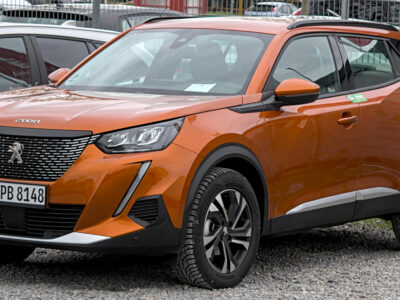
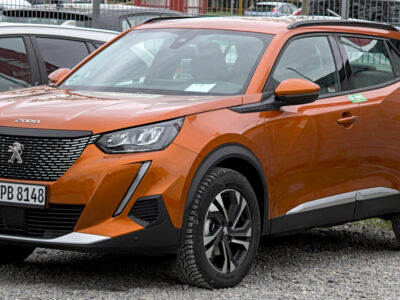
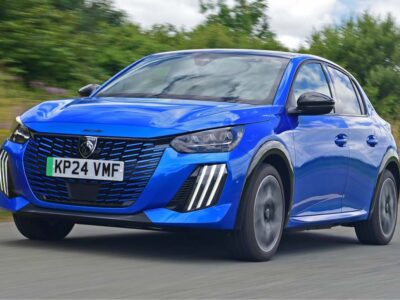
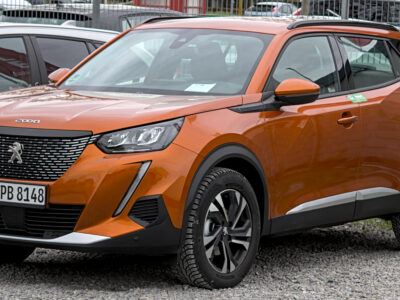
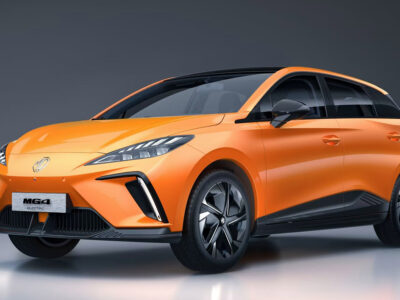
More content of your interest